Coral Spawning in Singapore: A Natural Wonder
 April 30, 2016
April 30, 2016
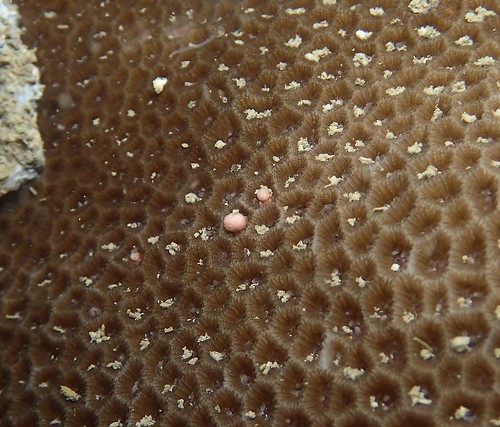
Not much is known about coral spawning events, and even less is known about mass coral spawning in equatorial regions. In fact, it wasn’t until 2002 that researchers finally managed to pin point a time of the year, and a time of the day during which coral spawning can be observed in Singapore! You can imagine why this remarkable event has remained a mystery for so long. Corals, as we all know, live in the sea. So to see them, we have to be in the sea. There are many hours in a day, and spawning occurs just over a few minutes. In order to witness such an event, you have to be at the right place in the ocean during the right time of the year and at the right time of day. As you would have to be SCUBA diving, the duration you are able to observe the corals is limited by the depth and length of time that you can stay submerged! A very challenging task indeed! But, thanks to the curiosity and tenacity of our marine scientists and volunteers, and not to mention the accessibility of Singapore reefs, this event is becoming increasingly well documented in Singapore! We bring you a glimpse of this very special event through the photos and videos by Toh Chay Hoon. Above, polyps of a Goniastrea coral colony begin to release their eggs.

Together with a group of scientists from NParks, Chay Hoon made a visit to Pulau Satumu (aka. Raffles Lighthouse), that is a part of a group of islands in the southern waters of Singapore. This year’s coral spawning event occurred close to 9pm. The divers entered the water at dusk and stationed themselves at a spot of the reef where the trained their eyeballs on the very “pregnant” corals that are at the cusp of releasing their eggs and sperm (collectively known as gametes). As corals synchronise their spawning, the divers spread themselves out at specific sectors of the reef so that we (and the world!) can better observe and document the different species that will spawn at the same time.
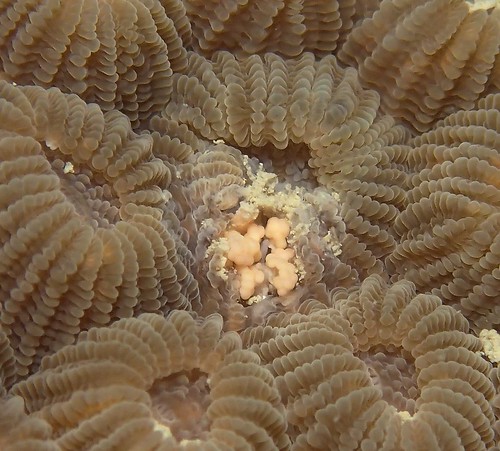
On this particular night, Chay Hoon observed five colonies that spawned. To date, scientists in Singapore have documented at least 18 different coral species from ten genera and five families (Acroporidae, Faviidae,M erulinidae, Oculinidae and Pectiniidae) spawning in Singapore [1]. Above: A poly of hard coral Diploastrea releasing gametes through its oral pore. Chay Hoon shares, “Finally saw the spawning of Diploastrea. It’s just so magical! As if the coral sneezes, and out came this cloud of eggs and sperm right in front of you! Wow!!!! The amazing thing is this colony “sneezes” at least 3 times! OMG! Simply WoW!!”
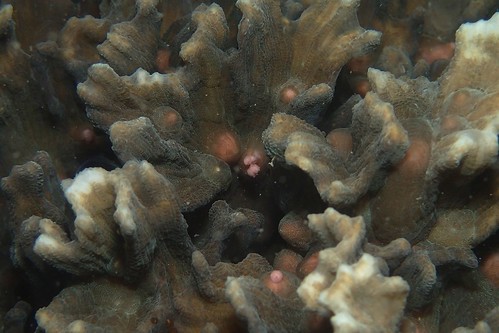
Mass spawning, aka. broadcast spawning, aka. synchronous spawning, is when animals release their gametes into the water, where fertilisation occurs externally. This method of reproduction is especially common with animals in the sea. Limpets, clams, sea anemones, fan worms, jellyfish, and coral all reproduce externally by releasing their gametes to be fertilised by neighbours (of the same species of course!). Some coral families have males and females as separate individuals (gonochoric), some are hermaphroditic or bisexual where each polyp has active male and female reproductive organs, or can switch from male to female or female to male (sequential hermaphrodites), and some (although very much less common) are capable of self fertilisation (Parthenogenesis). Some species from the genus Pocillopora and Porites have been reported to have done this. There are also brooders, where the males broadcast sperm that hopefully interacts with a female or hermaphroditic individual, within which an egg will be fertilised internally. Phew! The ocean is a hard place to live and reproduce in! Corals have adapted with all sorts of reproductive strategies! We are only just beginning to understand the beginning of it! (Above: Pectinia coral spawning 2055hrs)

Mass spawning doesn’t happen randomly. In fact, it is often critically timed when conditions are ideal to increase the success rate of reproduction. Because there is a critical time, scientists have been able to study patterns and narrow down a time and tide during the year when corals are most likely to spawn. This would not be possible is such events occurred haphazardly. Above: Merulina coral spawning

The timing of a broadcast spawning event is very important because male and female corals cannot move to make reproductive contact with each other. Because colonies may be separated by wide distances, the release of sperm and eggs must be precisely timed. This usually occurs in response to multiple environmental cues (these are some of the patterns that scientists observe). There are both long-term and short-term controls that affect the timing of spawning events. The long-term control of spawning may be related to temperature, day length, or rate of temperature change. The short-term control is usually based on lunar cues. The final release, or spawn, is usually based on the time of sunset [2]. Broadcast spawning coral species may spawn on only one or a few nights each year, and though different species may spawn at different times, the spawning events for any given species happen at the same time [3]. Above: Merulina close up
What happens once corals release their gametes into the water? Well, a few things can happen. The eggs and sperm of gonochoric species that are typically buoyant, float to the surface of the water where they interact and eggs get fertilised. Among hermaphroditic species that release egg/sperm bundles, the sperm cells detach from the bundles and fertilise the eggs. Sequential hermaphroditism is believed to have evolved as an effective strategy to sexually reproduce, since any two individuals from the same species may be able to fertilise one another. This overcomes the problem of an incidental lack of either males or females in a given population. Second, sequential hermaphroditism allows an individual to produce sperm instead of eggs during times of stress, which is more economical as sperm require less energy to produce. Eggs have to be loaded with protein and fats, which is undesirable for any organism during times of physiological stress. It has been found that the coral Ctenactis echinata reproduces as a male when it is small or stressed by sedimentation or bleaching [4]. Above: Lobophyllia polyp releases its gametes.
I call this this the Egg Fest. Imagine a festival of omelettes. Or an egg buffet! Scrambled, boiled, poached, fried. Coming at you in all directions! If you like eggs, you’re in for a treat. Even if you don’t like eggs, you might just have some too since all you have to do is open your mouth and some eggs are going to find their way down your throat. It may seem like a lot of hard work gone to waste for the coral that went through the effort of synchronising their egg release to just one or a few times within the year only to have it all dished up as a meal. But these events and the resulting larvae that develop after fertilisation occurs, become an important part of the plankton present in the ocean and are consumed by many organisms such as crustaceans and whales. Eventually, a small portion (possibly less than 1%) settles onto a reef which may be hundreds of kilometres away from its location of origin.
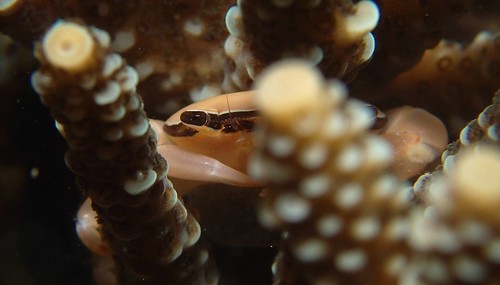
Speaking of crustacean, here’s a Bandit crab (Trapezia spp.) tucked within an Acropora coral colony. Its name makes it come across as a bad fellow, but Bandit crabs have been observed protecting the coral colony by nipping at the guts and legs of predatory sea stars. After all, if you have found a nice place to live, it makes good sense to defend it!
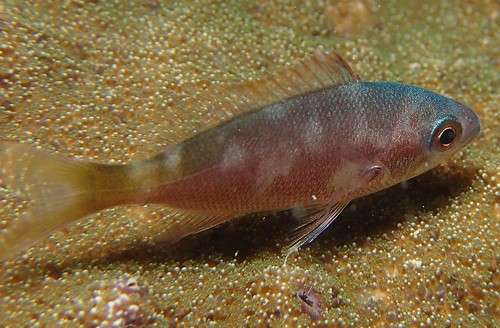
Some fish become exceptionally easy to photograph at night as they hover motionless above the coral.
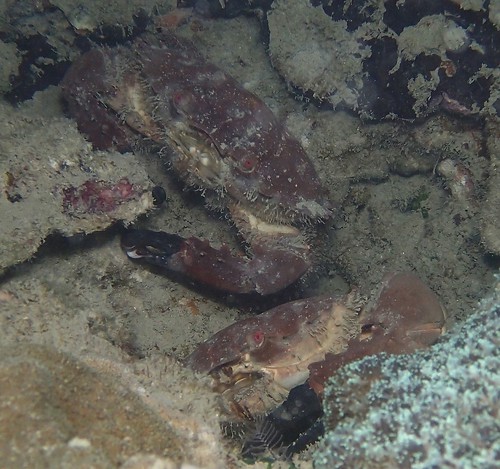
Spoon crabs get busy at night too.
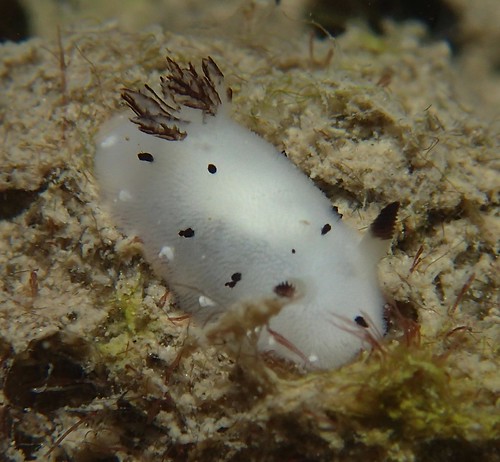
A little nudibranch Jorunna funebris doesn’t feel the need to hide away in the night.

Arabian cowrie Mauritia arabica
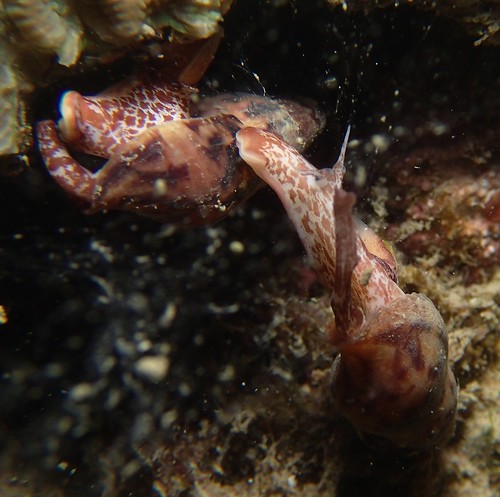
Some marine snails, like some of our corals, are hermaphrodites too. As it is, it is hard for a snail to meet another snail on the reef. Imagine if they were gonochoric (Remember what this word means? If you’re not sure, scroll up again to check!). Life becomes a lot simpler, and reproduction a lot easier, when all you have to do is meet another individual and both individuals posses the capacity to mate either way. It’s no good for a female snail to meet another female snail on the reef. There’s no time for girlfriends when you got 30 days to sort out your legacy. Snails got to cut to the chase! Some marine snails are a bit luckier and can have up to 90 days before they keel over and become food for a crab or fish, or even more annoyingly, another snail! Aren’t these two snails beautiful?! They look like giraffes with those patterns on their bodies.
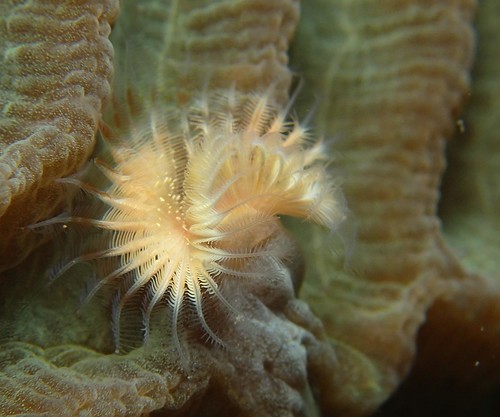
Tube worm – filter feeders great for trapping coral larvae! We are so lucky in Singapore to have these wonderful living and wild reefs for us to explore and discover the wonders of our marine world! Not many urban countries have such refugia located so close to an urban metropolis. With hard work and a keen interest, we can work to keep our oceans safe from harm. But as you can see, coral reefs are very complex systems! Protecting our reefs is going to take more than a local effort. It will require regional commitment too! Which is why it is important for us to work together, across nations, across agencies, across institutions and across generations, to safeguard our coral reefs for the future. Thank you to Chay Hoon for this visit into the reefs during the mass coral spawning, and to the scientists and volunteers who have worked and continue to work so hard so that we can come a bit close to understanding and appreciating the value of our reefs!
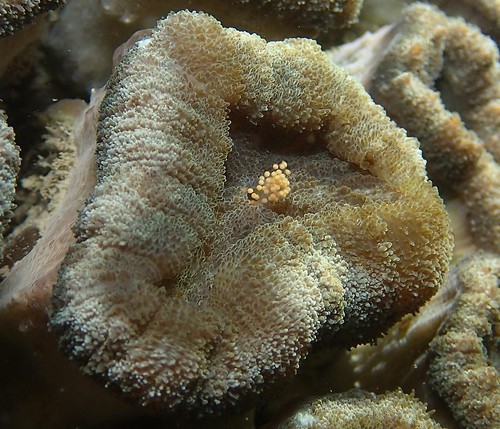
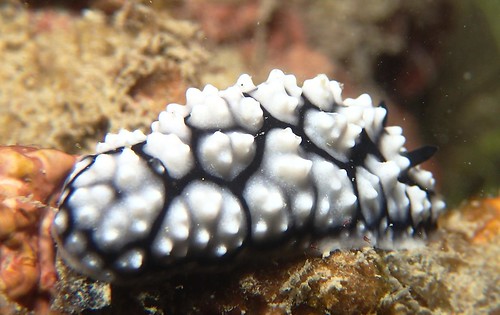
 Posted in
Posted in 



 content rss
content rss
COMMENTS